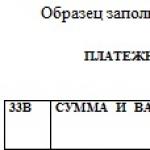VAT – 18 rubles). The card is intended for refueling a car that is simultaneously used in two types of activities. The organization’s accounting policy states that general business expenses are distributed in proportion to income for each month of the reporting (tax) period. To distribute the costs of purchasing a fuel card between two types of activities, the Hermes accountant compared the income from wholesale trade with the total amount of income. The amount of income received by Hermes from various activities in May is:
- for wholesale trade (excluding VAT) – RUB 26,000,000;
- for retail trade – 12,000,000 rubles.
The organization did not carry out operations exempt from VAT. The share of income from wholesale trade in total income for May was: RUB 26,000,000. : (RUB 26,000,000 + RUB 12,000,000) = 0.684.
Accounting for expenses for the purchase of fuel cards in a budgetary and autonomous institution
Info
When paying for and receiving a fuel card, make the following entries in accounting: Debit 60 Credit 51 – the collateral value of the card was transferred to the fuel supplier; Debit 009 – reflects the issued collateral; Debit 015 “Fuel cards” – the fuel card is accepted as balance. When returning the card to the issuer: Debit 51 Credit 60 – the collateral value of the fuel card has been received; Loan 009 – the issued collateral has been written off; Credit 015 “Fuel cards” – the fuel card is written off from off-balance sheet accounting.
Accounting: purchasing a card for a fee In this case, the cost of a fuel card (less VAT) can be immediately written off as expenses (clause 5 of PBU 10/99). Record the VAT amount separately on account 19 “VAT on purchased assets.”
To control, consider the cost of the card along with the balance. For example, on account 015 “Fuel cards”.
Gasoline accounting using a fuel card in 1c accounting
Instructions N 162n in the budget accounting of a government institution in the situation under consideration, the following accounting entries can be made: 1) Debit KRB 1 206 34 560 Credit KRB 1 304 05 340 - an advance was transferred to the fuel supplier; 2) Debit KRB 1 105 33 340 Credit KRB 1 302 34,730 - based on the driver’s report, fuel dispensed at the gas station was credited;3) Debit KRB 1,401 20,272 Credit KRB 1,105 33,440 - based on waybills, consumed fuel was written off;4) Debit KRB 1,302 34,830 Credit KRB 1,206 34 660 - the advance payment for fuel previously transferred to the supplier was offset; 5) Debit KRB 1,302 34,830 Credit KRB 1,304 05,340 - based on the results of the period stipulated by the contract, the final settlement was made with the fuel supplier.2. From the contents of paragraph.
How to take into account fuel cards in the budget and reports of enterprises
- Fill in the “From” and “Invoice No.” fields and register the document.
- Fill in the “Received” field, indicating the date the document was received by the buyer.
- Specify the basis document.
- Check the “Reflect deduction” box.
- Select the appropriate method of receipt and record the document. The result of the above actions is shown in Fig. 9. In order to save data on fuel cards, you can organize accounting of these cards in account 006.
In order to accept a fuel card for off-balance sheet accounting for this account, you must create a “Transaction” document. This is done in the following order (see.
Instructions N 157n, letter of the Ministry of Finance of Russia dated November 27, 2014 N 02-07-10/60399). The accounting policy of a state institution may provide for a requirement to account for fuel cards at the cost of their acquisition (manufacturing) (clause 337 of Instructions N 157n). Accounting for such cards can be organized by persons responsible for their use.
Important
In this case, cards stored in the institution’s cash desk should be taken into account separately. In addition, as an additional analytical indicator for accounting for fuel cards, a monetary expression of the volume of rights to receive petroleum products provided under this card may be provided.
The agreement was concluded with the issuance of a fuel card through which payments will be made. The list of transactions on this card, as well as the car driver’s waybill, are taken into account by the organization - accordingly, the cost of fuel purchased with this card must also be taken into account.
Currently, income tax does not take into account the costs of purchasing fuel and lubricants. The actual expenses correspond to the standards established for this particular company by order of its general director. Information on how information about the purchase of fuels and lubricants using a fuel card can be reflected in the 1C Accounting 8 product is given in the material from the Directory of Business Operations. Transferring payment to the supplier for fuel and lubricants and fuel cards. Drawing up a payment order for payment for fuel and lubricants and a fuel card is carried out as follows (see.
rice.
Register your fuel card in 1C government agencies
Fuel cards also do not meet this requirement. The costs associated with the purchase of fuel cards can be regarded as additional costs for the purchase of fuel, that is, included in the cost of gasoline purchased using them.
A similar accounting procedure is proposed, in particular, in the Sectoral Features of Budget Accounting in the Healthcare System of the Russian Federation, approved by the Ministry of Health and Social Development of the Russian Federation. At the same time, the Russian Ministry of Finance proposes to reflect the cost of fuel cards in the manner established for strict reporting documents.
That is, they are recorded in off-balance sheet account 03 “Strict reporting forms”. The cost of producing the card is reflected in the current expenses of the institution and is paid through Article 226 “Other works, services” of KOSGU.
The specific accounting procedure for fuel cards can be determined as an element of the institution’s accounting policy.
- Click “Create” and “Add” to create a new transaction.
- Select account 006 (field “Debit”) and indicate how many fuel cards should be taken into account.
- Fill in the “Amount” field at the rate of “one fuel card – 1 ruble”.
- Record the document and close it. Accounting for fuels and lubricants To account for fuels and lubricants purchased using fuel cards, you must perform the following operations:
Go to the “Operations” menu and select “Manually entered operations”.
- Go to the “Purchases” menu and select “Receipts”, operation “goods”.
- Fill in information about the agreement with the counterparty.
- In the “Nomenclature” section, indicate the name of the fuel.
- Fill in the other fields (see Fig. 11) and save the document.
The result is shown in Fig. 12. In order to accept VAT for deduction, you must generate the received invoice (see.
According to the accounting policy of the institution, the cost of fuel cards is included in the cost of purchasing fuel. Situation 1 According to the terms of the agreement with the supplier of petroleum products, ownership of the fuel passes to the institution at the time of its collection (refueling the car).
In this case, fuel is sold at retail prices in effect at that moment. On the day of refueling the car, the cost of fuel was 37.76 rubles/l (including VAT - 5.76 rubles). Operations for purchasing a card, sampling and writing off gasoline are reflected in the institution’s accounting records (to simplify the example, off-balance sheet accounting of the institution’s funds is not given): Debit 4,106 34,340 Credit 4,302 26,730 – 944 rubles. - the costs of purchasing a fuel card and accounts payable to the supplier are reflected (including “input” VAT); Debit 4,302 26,830 Credit 4,201 11,610 – 944 rub.
Accounting for gasoline using a fuel card in 1C Accounting 05/05/2016 Accounting for the purchase of gasoline using a fuel card in the 1C Accounting program 8 (edition 3.0) The purchase of gasoline and diesel fuel at gas stations is possible both by cash or non-cash payment, and by fuel card. A fuel card is a plastic card with a microprocessor built into it.
This microprocessor, or chip, stores information about the limit of funds allocated for the purchase of fuels and lubricants and related services at gas stations. In addition, data about the range of fuels and lubricants of a particular fuel company and data about the services that this company provides are recorded in the chip.
In the 1C Accounting 8 program, it is possible to take into account the purchase of fuel and lubricants using fuel cards. In particular, the following example can be given. A certain company that owns a car enters into an agreement with a fuel company that supplies fuel and lubricants.
Thus, the card may be blocked if timely payment is not made and fuel will not be released upon presentation. As a result, the principle of unconditionality of a monetary document is violated.
In addition, the fuel card does not have a face value, that is, the cost for which you can purchase fuel. In essence, this is a technical device issued to drivers for dispensing petroleum products at gas stations.
When issuing a fuel card, no money is actually transferred to an employee of the organization. Therefore, to reflect these transactions, the use of accounts 0 201 00 000 “Cash” (analytical account 0 201 35 000 “Cash documents”) and 0 208 00 000 “Settlements with accountable persons” is unjustified. It is also not entirely legal to take fuel cards into account in account 0 105 00 000 “Inventory”. Non-financial assets must have value in themselves or be used by the organization as objects of labor.
The 1C Accounting 8.3 program is a very convenient tool for maintaining accounting records in an enterprise; it will help both a novice accountant and an experienced accountant not to make mistakes when maintaining records.
Let's consider the issue of recording and writing off fuel and lubricants in an organization and step by step reflect the actions of the accountant in the program.
Firstly, if a working car (or several) is listed on the company’s balance sheet, then a waybill must be filled out daily for each unit (maximum once a month). The driver or mechanic displays information about the car, the route, normal and actual gasoline consumption.
Secondly, gasoline consumption standards are calculated by an accountant for each car based on the standards of the Ministry of Transport and are fixed by order for the enterprise.
Thirdly, the receipt of fuel and lubricants is processed on the basis of primary documents: an invoice from the supplier (if an agreement has been concluded) or an advance report if the driver refuels the car for cash.
Algorithm of actions of an accountant in the 1C Accounting 8.3 program
- Registration of receipt of fuel and lubricants. Follow the path: /Purchases/ - /Receipts (acts, invoices) - button “Receipts” - Goods (invoice)
From the primary document, the invoice, we fill in the data: number and date of the invoice, name of the counterparty, agreement (if any), warehouse, nomenclature. Check the accounting accounts, the accounting account should be 10.03.
At the bottom left, record the invoice from the supplier.
You can view transactions generated based on the posted document using the icon
If an advance was transferred to the supplier, then the entry “Advance offset” is added Dt60.02 Kt 60.01
- Write-off of fuel and lubricants based on a waybill
Write-offs must be made according to the calculated rate
- Reflection of write-off of fuel and lubricants. Follow the path: /Warehouse/ - /Warehouse/ - Requirements-invoices- “Create” button
It is necessary to sum up the consumption for all waybills for a given driver and vehicle and enter the total quantity in the quantity column.
After posting the document, we create a balance sheet for account 10.03 and compare the remaining gasoline with the waybill issued on the last day of the month.
/ "Accounting encyclopedia "Profirosta"
@2017
20.06.2017
Information on the page is searched for by the following queries: Accountant courses in Krasnoyarsk, Accounting courses in Krasnoyarsk, Accountant courses for beginners, 1C: Accounting courses, Distance learning, Accountant training, Training courses Salaries and personnel, Advanced training for accountants, Accounting for beginners
Accounting services, VAT declaration, Profit declaration, Accounting, Tax reporting, Accounting services Krasnoyarsk, Internal audit, OSN reporting, Statistics reporting, Pension Fund reporting, Accounting services, Outsourcing, UTII reporting, Bookkeeping, Accounting support , Providing accounting services, Assistance to an accountant, Reporting via the Internet, Drawing up declarations, Need an accountant, Accounting policy, Registration of individual entrepreneurs and LLCs, Individual entrepreneur taxes, 3-NDFL, Organization of accounting
Orlova E.V. expert,
magazine "Russian Tax Courier" No. 17/2008
The publication was prepared with the participation of specialists from the Federal Tax Service of Russia
Organizations that use transport in their activities inevitably have expenses associated with the purchase of fuels and lubricants. Gasoline can be purchased using fuel cards. How to reflect operations on receipt and consumption of fuel in accounting and tax accounting? After all, the company will receive documents confirming the purchase of fuels and lubricants only at the end of the month.
Fuel microprocessor cards (so-called smart cards) are a convenient and reliable way to pay for fuel, most attractive for corporate clients. Fuel card holders are mainly legal entities. These cards allow you to control when, how much, for what amount, at what price, at what gas station, what brand of fuel and lubricants were purchased. Currently, the demand for fuel cards is increasing among medium and large companies.
Specifics of payments using smart cards
A fuel microprocessor card, issued by a fuel company or the owner of a gas station network, is a technical means of recording the supply of petroleum products at gas stations that accept smart cards. A fuel card is not considered a means of payment. Moreover, it can be limited or unlimited.
The unlimited fuel card contains the number of liters of each type of fuel purchased by the purchasing organization from the supplier of petroleum products, which can be received by the buyer in full of the balance on the card without daily restrictions. The buyer has the opportunity to limit the drain of fuel from non-limited cards to a daily or monthly limit based on the application. If the fuel volume on an unlimited card is exhausted, fuel receipt is suspended.
A limited fuel card is a card on which a single daily or monthly limit (number of liters) is established. With a limited card, the buyer receives different types of fuel, the total amount of which per day or month should not exceed the established limit, regardless of how many liters of fuel were received using the card in previous days. To change daily or monthly limits on limited cards, it is necessary to reformat the card based on a standard application submitted to the fuel supplier’s office. In the application, the buyer indicates the values of the new limits. For example, the limit is 30 liters of AI-98 gasoline per day. In this case, the card holder can spend no more than 30 liters per day (from 00.00 to 24.00) at a time or over several refills. In this case, the paid volume of fuel is reduced by the amount of liters filled. Each beginning of the day provides the opportunity to refuel the established limit of gasoline in full.
The operation of writing off liters from a fuel card can be stopped by the gas station terminal only for the following reasons:
The amount of fuel requested exceeds the balance on the card or the daily limit;
The card is blocked.
As a rule, technical support for the functioning of the payment system using fuel cards is provided by a processing center (processing company) - a central information collection point that receives all information from gas station card terminals. The information is processed and sent to organizations in the form of acts, reports, and registers.
To purchase gasoline using fuel cards, the company must enter into a fuel supply agreement with the processing center or an agreement for refueling vehicles with petroleum products using fuel cards. In essence, this is a mixed agreement. The processing center acts as a fuel card issuer and operates under commission agreements with the owner of the fuel.
In accordance with the said agreement, the supply of gasoline is carried out by sampling it at the supplier's gas station (the list of gas stations is given in the appendix to the agreement) by the buyer (buyer's card holder) using fuel cards through fuel dispensers using the supplier's accounting terminals to identify the card holder.
Fuel sampling and data transfer begins from the date the purchasing company receives fuel cards. The delivery date is considered to be the date of fuel sampling by the buyer's card holder, indicated in the receipt of the gas station registration terminal.
Typically, the contract stipulates that ownership of petroleum products passes to the buyer at the time the buyer’s vehicle is refueled at a gas station based on the fuel card presented by the buyer’s representative.
Payments for purchased fuel are made by transferring by the purchasing organization to the supplier's account a 100% prepayment of the ordered amount of fuel in accordance with the supplier's price list at the prices established on the date of invoice. Prepayment can be made by the buyer independently or on the basis of invoices issued at the buyer’s request for the amount of the prepayment calculated based on the limit.
In some cases, the buyer separately pays the cost of reusable liter fuel cards with a daily (or monthly) limit.
The quantity of transferred petroleum products is determined based on the amount of funds in the personal account of the purchasing organization. The maximum permissible balance of funds on the buyer’s personal account is determined in accordance with the terms of the concluded agreement (for example, based on the consumption of petroleum products within three days). When the balance amount (number of liters) on the personal account of the purchasing organization for any brand of fuel reaches the signal threshold value (it is determined by the supplier), the supplier warns the buyer about the need to place an order for fuel.
Documenting...
...fuel cards
Fuel cards are issued on the basis of an application approved by authorized persons of the buyer. When transferring fuel cards to an organization (its representative), an acceptance certificate or (form No. TORG-12) is drawn up.
EXAMPLE 1
Aurika LLC entered into Agreement No. 65 dated August 11, 2008 with the fuel company Petrol Plus CJSC for the purchase of AI-98 and AI-95 gasoline using smart cards. An application has been submitted to receive fuel cards. When handing over the cards, the parties signed an act.

To record the movement of issued and returned fuel cards, it is advisable for an organization to develop and approve a special monthly journal in its accounting policies.
REFERENCE
Smart cards for additional gas station services
Fuel cards can also be used to obtain additional gas station services (body washing, polishing, interior cleaning, tire fitting, etc.). To account for such services, a concept is introduced, for example, “conditional washing”. The cost of one unit of “conditional washing” is set in the supplier’s price list.
For these services, the purchasing organization is charged the number of units of “conditional washes” that corresponds to the services consumed in terms of one “conditional wash.” Let’s assume that the cost of a “conditional wash” is 100 rubles. If washing a car body costs 550 rubles, 5.5 “conditional wash” units will be debited from the fuel card. In this case, the balance of units of these services on the personal account of the purchasing organization is reduced by an amount equal to the number of units of services received by the buyer.
Please note that if the purchasing organization, according to the application, purchases several smart cards at once, neither money (the smart card is not a means of payment) nor liters are credited to each individual smart card. An advance payment to the processing center is made for the total amount of gasoline declared for all fuel cards in total. In fact, a smart card is just a technical tool issued to drivers to dispense petroleum products at gas stations. That is why, when a smart card is issued, neither money nor monetary documents are transferred to its holder (driver). Accordingly, the use of accounts 71 “Settlements with accountable persons” and 50 “Cash” subaccount 50-3 “Cash documents” in this case is unreasonable. The fact of issuance is recorded only in the monthly log of receipt and issuance of smart cards, and is not reflected in the accounting accounts.
A fuel card with a daily (or monthly) limit indicates the volume of purchased fuel in liters (and not the cost), which allows the card holder to fill the fuel tank with gasoline within the consumption limit specified in the application of the purchasing organization.
In this regard, we recommend developing and approving in the order on accounting policies a sample of a special form “Smart Card Holder Report”. You can take, for example, the form of an advance report as a basis, supplementing it with the necessary quantitative details related to the specifics of circulation of a fuel card that is not a means of payment.
The data from the monthly report (register) of the processing center on the movement of fuel on a single card (or on all cards - depending on which report is submitted in accordance with the terms of the agreement) must be compared with the data from the reports of smart card holders and the terminal receipts attached to them Gas station. In order to facilitate the organization’s control over the purchase of petroleum products, it is advisable to determine in the annex to the order on accounting policies the procedure and timing for submitting a special report of the smart card holder.
...gasoline costs
Every month, after processing the data, the processing center provides the purchasing organization with an invoice, a reconciliation report for mutual settlements, a bill of lading for the volume and cost of the selected fuel, as well as a monthly report (or register) of card transactions. These documents record the quantity of purchased fuels and lubricants.
The main supporting document confirming the actual consumption of fuels and lubricants for production purposes is a waybill. Its unified form was approved by Decree of the State Statistics Committee of Russia dated November 28, 1997 No. 78. The waybill indicates the number and date of its issue, the number and make of the car, the purpose of the trip, information about the specific route, speedometer readings, and the remaining fuel upon departure and return. The above details are mandatory and reflect the content of the business transaction. Based on these data, the actual fuel consumption for a particular vehicle is determined.
Please note: if the purchasing organization is not recognized as a specialized or motor transport organization, it has the right to develop the form of the waybill independently, provided that the developed waybill contains the necessary details provided for in paragraph 2 of Article 9 of the Federal Law of November 21, 1996 No. 129-FZ ( see, for example, letters of the Ministry of Finance of Russia dated 04/07/2006 No. 03-03-04/1/327 and dated 02/20/2006 No. 03-03-04/1/129). In this case, waybills must be drawn up in such a way and with such regularity that on their basis one can judge the validity of the expense incurred. The letter of the Ministry of Finance of Russia dated March 16, 2006 No. 03-03-04/2/77 emphasizes that if the weekly (monthly, quarterly) preparation of a waybill makes it possible to organize the accounting of time worked and consumption of fuels and lubricants, a waybill drawn up with such frequency , with the attachment of the necessary primary documents reflecting the purchase of fuels and lubricants, can confirm the taxpayer’s expenses for gasoline. In addition, the independently developed form of the waybill must necessarily contain information about the final destination of the vehicle. These data allow us to judge whether the car is used by employees of the organization for official purposes.
Thus, if an organization that purchases gasoline using smart cards uses an independently developed form of waybill, it must be included in the accounting policy. It is also necessary to record the regularity of drawing up this document.
Smart card accounting
When an organization purchases a smart card, its cost should be reflected in accounting as part of inventories as other materials in account 10 “Materials” subaccount 10-6 “Other materials”. The basis will be a delivery note or an act of acceptance and transfer of a smart card (as of the date of its receipt).
According to paragraph 6 of PBU 5/01, inventories are accepted for accounting at actual cost. It is equal to the amount of the organization’s actual costs for the acquisition of inventories, excluding value added tax and other refundable taxes. In the situation under consideration, the actual expense for the purchase of smart cards is the amount paid under the agreement of the processing or fuel company, excluding VAT.
Since the purchase of smart cards is inextricably linked with the purchase of gasoline (they themselves are not used in the activities of the purchasing organization), at the end of the month the cost of smart cards must be included in the cost of purchased fuel.
For profit tax purposes, the cost of a fuel card is taken into account as part of other expenses associated with production and sales, on the basis of subparagraph 49 of paragraph 1 of Article 264 of the Tax Code of the Russian Federation.
The amount of value added tax presented by the card seller to the purchasing organization is accepted for deduction on the basis of an invoice (clause 1 of Article 172 of the Tax Code of the Russian Federation) and subject to the conditions established in clause 2 of Article 171 of the Tax Code.
Accounting for fuel purchased using smart cards
Considering that the delivery note and the report (register) on fuel card transactions are presented to the purchasing organization by the processing center at the end of the month in which petroleum products were purchased using smart cards, purchasing organizations have problems recognizing fuel expenses. After all, the cost of purchased petroleum products can be written off as expenses only after they have been accepted for accounting. In turn, fuels and lubricants are accepted for accounting on the basis of available primary accounting documents, which are received by the purchasing organization in accordance with the terms of the contract only at the end of the reporting month.
Based on the specifics of payments for petroleum products using fuel cards, in the author’s opinion, there are several ways to take into account gasoline purchased using smart cards and write it off as expenses in the future.
Registration and write-off of gasoline once a month
The basis for accounting for gasoline purchased using smart cards into account 10 “Materials” subaccount 10-3 “Fuel” is the delivery note from the processing center, dated the last day of the reporting month, as well as the monthly report of the smart card holder with receipts attached to it gas terminals. (The report data is verified with the data from gas station terminal receipts received by cardholder drivers when sampling fuel.)
An important point: the price information contained in gas station terminal receipts is for reference only, since the entire volume of declared fuel was paid by the organization as a 100% prepayment and is not subject to change as it is supplied. At the same time, the gas terminal receipt will indicate current prices for each specific date, which, of course, may be different. By the way, this is precisely one of the advantages of fuel cards: the purchasing organization purchases gasoline at today’s price, and will use it for several weeks or months, during which the cost of gasoline can increase significantly.
Gasoline consumed is written off as expenses based on travel vouchers.
The methodological justification for the stated accounting procedure is clause 15 of the Regulations on accounting and financial reporting in the Russian Federation, approved by order of the Ministry of Finance of Russia dated July 29, 1998 No. 34n. According to this norm, the procedure for creating primary accounting documents and the timing of their transfer for reflection in accounting are established in accordance with the document flow schedule approved by the organization.
Thus, an organization that purchases gasoline using smart cards has the right to reflect transactions on the acceptance of gasoline for accounting and its subsequent write-off as expenses once a month. True, provided that the processing or fuel company submits all the necessary documents at the end of the reporting month, but no later. This procedure should be fixed in the accounting policy.
In paragraphs 5, 7 and 9 of PBU 10/99 it is determined that the costs associated with the acquisition of raw materials, materials, goods and other inventories (in this case, the costs of purchasing gasoline consumed by the organization, as well as for the production of smart cards), are expenses for ordinary activities on the basis of which products are formed.
Deduction of VAT amounts presented by the supplier is carried out in accordance with the generally established procedure, that is, if the following conditions are met:
Fuel has been capitalized;
There are all necessary documents (including);
The fuel will be used in operations subject to VAT.
EXAMPLE 2
Let's use the condition of example 1. Aurika LLC entered into an agreement with the fuel company Petrol Plus CJSC for the purchase of AI-98 and AI-95 gasoline using smart cards.
According to the invoice issued by Petrol Plus CJSC on August 12, 2008, the amount of 38,540 rubles was transferred. (including VAT 5879 rubles) as an advance payment for AI-98 gasoline with a volume of 1000 liters at a price of 26.2 rubles. per liter (including VAT 4 rubles) and brand AI-95 with a volume of 500 liters at a price of 24.68 rubles. per liter (including VAT 3.76 rubles).
The cost of manufacturing two smart cards is 590 rubles. (including VAT 90 rubles) was paid on August 14, 2008. Smart cards in the amount of two pieces were received according to the acceptance certificate dated August 14, 2008.
Let's assume that within a month all the gasoline was received and consumed. CJSC Petrol Plus promptly submitted a delivery note for the shipment of gasoline for the amount of the prepayment, an invoice and a register of fuel movements for August. The documents are dated August 31, 2008.
The register information on the movement of fuel from Petrol Plus CJSC and the information from the reports of two smart card holders coincide.
Based on the accounting policy of Aurika LLC for 2008, the organization:
Gasoline purchased using smart cards is accepted for accounting and written off once a month;
A waybill in a form developed independently is drawn up monthly and submitted to the accounting department on the last calendar day of the reporting month;
A report from smart card holders in a form developed independently is compiled monthly and submitted to the accounting department on the last calendar day of the reporting month.
The following entries were made in the accounting records of Aurika LLC:
DEBIT 60 subaccount “Advances issued” CREDIT 51
RUB 38,540 - prepayment for gasoline was transferred based on the account of Petrol Plus CJSC;
DEBIT 60 CREDIT 51
590 rub. - payment for two smart cards was transferred based on the account of Petrol Plus CJSC;
DEBIT 10-6 CREDIT 60
500 rub. - two smart cards are accepted for accounting on the basis of the consignment note;
DEBIT 19 CREDIT 60
90 rub. - VAT charged on two smart cards is taken into account;
90 rub. - the amount of VAT on two smart cards was accepted for deduction based on the invoice of CJSC Petrol Plus (the requirements of paragraph 2 of Article 171 and paragraph 1 of Article 172 of the Tax Code of the Russian Federation were met);
DEBIT 10-3 CREDIT 60
RUB 32,661 (RUB 38,540 – RUB 5,879) - gasoline received in August, purchased using two smart cards on the basis of a delivery note from Petrol Plus CJSC, a fuel movement register for August from Petrol Plus CJSC and two reports were taken into account smart card holders;
DEBIT 19 CREDIT 60
5879 rub. - VAT is taken into account on the cost of gasoline received;
DEBIT 68 subaccount “VAT calculations” CREDIT 19
5879 rub. - the amount of VAT was accepted for deduction from the cost of gasoline actually received in August on the basis of the invoice of JSC Petrol Plus (the requirements of paragraph 2 of Article 171 and paragraph 1 of Article 172 of the Tax Code of the Russian Federation were met);
DEBIT 60 subaccount “Settlements with CJSC Petrol Plus” CREDIT 60 subaccount “Advances issued”
RUB 38,540 - prepayment for gasoline was credited based on the statement of reconciliation of settlements with CJSC Petrol Plus;
DEBIT 10-3 CREDIT 10-6 “Other materials”
500 rub. - the cost of two smart cards is included in the price of gasoline;
DEBIT 26 CREDIT 10-3
RUB 33,161 (32,661 rubles + 500 rubles) - the cost of gasoline consumed in August and the cost of producing two smart cards (based on the waybills of two drivers for August 2008) are recognized as general business expenses.
Acceptance of registration and write-off of gasoline within a month
In accordance with this method, gasoline is registered as it is refueled based on reports from cardholders and receipts from gas station terminals at the accounting prices accepted by the organization. This accounting procedure is based on the accounting rules for uninvoiced supplies established in paragraphs 36-41 of the Guidelines for accounting of inventories, approved by Order of the Ministry of Finance of Russia dated December 28, 2001 No. 119n.
Paragraph 37 of the said document states that uninvoiced deliveries are accepted into the warehouse with the preparation of a materials acceptance certificate (form No. M-7, approved by Resolution of the State Statistics Committee of Russia dated October 30, 1997 No. 71a). If necessary, after receiving documents from the processing or fuel company, the price is adjusted (if the accounting prices differ from the prices set in the price list on the date of invoice).
Spent gasoline is written off as expenses in the manner discussed earlier, based on waybills. This accounting procedure, as well as the regularity of drawing up reports from smart card holders and waybills, must be recorded in the accounting policies of the purchasing organization.
In relation to the situation under consideration, VAT can be deducted from the cost of gasoline actually received only after the processing or fuel company issues an invoice.
Let us note that both considered procedures for accepting for accounting and subsequent writing off as expenses gasoline purchased using smart cards do not simplify the life of the chief accountant.
As practice shows, in the first case (when accounting once a month), it is very difficult to get processing or fuel companies to timely submit all the necessary primary accounting documents.
In the second case (when accounting within a month), additional labor costs may arise due to the need to adjust prices.
According to the author, organizations that purchase gasoline using smart cards should develop their own professional position on the problem considered, guided by the requirements of rational accounting and prudence in accordance with the norms of paragraph 7 of PBU 1/98.
Tax accounting of fuel purchased using smart cards
The organization's expenses for the purchase of fuel are taken into account either as part of material costs (subclause 5, clause 1, article 254 of the Tax Code of the Russian Federation), or as part of the organization's expenses for maintaining official vehicles (subclause 11, clause 1, article 264 of the Tax Code of the Russian Federation). At the same time, they reduce taxable profit if the requirements of paragraph 1 of Article 252 of the Tax Code are met. That is, these expenses must be economically justified, documented and incurred to carry out activities aimed at generating income.
Thus, for profit tax purposes, the primary documents confirming the costs associated with the purchase and write-off of gasoline purchased using smart cards are the primary documents used in accounting to account for these costs. In particular, these are waybills, invoices from a processing or fuel company for purchased petroleum products, receipts from gas station terminals, reports from smart card holders, reports on the movement of fuel from processing or fuel companies, etc.
To confirm the economic justification of costs in tax accounting, an organization has the right to apply consumption standards for fuels and lubricants.
Please note: the relevant standards were put into effect by order of the Ministry of Transport of Russia dated March 14, 2008 No. AM-23-r. Moreover, the new standards for fuel consumption are intended both for motor transport enterprises and for organizations involved in the management and control system, entrepreneurs and other persons, regardless of their form of ownership, operating automotive equipment and special rolling stock on vehicle chassis in the territory of the Russian Federation. According to the author, when developing operational standards, the organization has the right to be guided by this document.
At the same time, for tax purposes, the cost of actually consumed fuels and lubricants is taken into account on the basis of supporting documents.
Waybill is a document on the basis of which the costs of fuels and lubricants are taken into account. The printed form (form according to OKUD No. 0345001) is not mandatory for all organizations except transport companies. In typical 1C 8.3 configurations there is no printed waybill form (you can add it as an external one), but several methods are implemented:
- According to advance reports
- By coupons
- By fuel cards
Let's look at step-by-step instructions and some features of each of them.
The accounting scheme looks like this:
- Issuing cash to an accountant
- Preparation of an advance report
- Cash back to the cashier
- Write-off of costs for fuel and lubricants using fuel cards
Figure 1 shows an advance report, which reflects several operations at once: a report on the advance payment issued, the receipt of gasoline to the warehouse, information on the invoice (if there is one).
In Fig. 2 you can see the document postings. In order for accounting accounts for the “AI-92 Gasoline” product to be filled out automatically, you need to add a line for the “fuels and lubricants” group in the information register “” (see Fig. 3)


The printed form of the waybill can be connected as an external report or processing to the “Additional reports and processing” directory (see Fig. 4). The report itself will have to be ordered from specialists or purchased from Infostart.

The return of money on the advance report (in our example it is 8 rubles) is drawn up in the document “”, which is filled out automatically in the “Enter based on” mode from the document “”.
Write-off of fuel and lubricants using fuel cards
Unlike coupons, fuel cards are accounted not as, but as strict reporting forms in off-balance sheet account 006.
In general, the accounting scheme consists of the following points:
- Posting a fuel card
- Posting of gasoline received using a fuel card
- Write-off of expenses.
The capitalization of the cost of a fuel card can be recorded as a receipt of service - see Fig. 11 and Fig. 12. And the card itself is accounted for in account 006 by manual operation (Fig. 13)



The receipt of fuel is documented with the document “ ” (see Fig. 14, Fig. 15).

- liter (issued for a certain limit on the volume of fuel and lubricants).
Advice: in the context of constantly rising prices for fuel and lubricants, purchase liter fuel cards. This is more profitable, since the organization pays for a predetermined amount of fuel at the price in effect on the date of invoice. Until the organization selects the entire volume of fuel and lubricants according to the received card, a possible increase in fuel prices will not affect it. How to get a fuel card To purchase fuels and lubricants using fuel cards, you need to enter into an agreement with a wholesale supplier or directly with a gas station. Typically, the scheme for working with fuel cards looks like this. 1.
Gasoline accounting using a fuel card in 1c accounting
In general, the accounting scheme consists of the following points:
- Posting a fuel card
- Posting of gasoline received using a fuel card
- Write-off of expenses.
The capitalization of the cost of a fuel card can be recorded as a receipt of service - see.
Fig.11 and Fig.12. And the card itself is accounted for in account 006 by a manual operation (Fig. 13) Fig. 11 Fig. 12 Fig. 13 Receipt of fuel is documented in the document “Receipt of goods, services” (see.
Fig.14, Fig.15). Fig. 14 Fig. 15 Write-off of fuel and lubricants in 1C 8.3 Write-off of gasoline and other fuels and lubricants is documented in the same way for all options for accounting for fuel and lubricants using the document “Requirement-waybill” (Fig. 16, Fig. 17).
Fig. 16 Fig. 17 The cost of gasoline written off as expenses is taken into account at the average.
In conclusion, a little advice on how to write off fuel and lubricants using waybills for each vehicle.
400 bad request
Waybills in 1C 8.3 accounting - writing off fuel and lubricants using fuel cards
Fig.5 Get 267 video lessons on 1C for free:
- Free video tutorial on 1C Accounting 8.3 and 8.2;
- Tutorial on the new version of 1C ZUP 3.0;
- Good course on 1C Trade Management 11.
Fig.6 The issuance of coupons is documented in the document “Issue of monetary documents”, which is also located in the “Bank and cash desk” section (see.
Fig.7 and Fig.8).
Important
Fig.7 Fig.8 Used coupons are taken into account in the “Advance report” document (see.
Fig.9 and Fig.10). Fig.9 Fig.10 Used gasoline is written off to cost accounts using the “Demand-invoice” document, as in the first point. The waybill can also be called as an external report from the “Additional reports and processing” directory.
Write-off of fuel and lubricants using fuel cards Unlike coupons, fuel cards are not accounted as monetary documents, but as strict reporting forms on off-balance sheet account 006.
Typical situations
Accounting for gasoline using a fuel card in 1C Accounting 05/05/2016 Accounting for the purchase of gasoline using a fuel card in the 1C Accounting program 8 (edition 3.0) The purchase of gasoline and diesel fuel at gas stations is possible both by cash or non-cash payment, and by fuel card.
A fuel card is a plastic card with a microprocessor built into it.
This microprocessor, or chip, stores information about the limit of funds allocated for the purchase of fuels and lubricants and related services at gas stations.
In addition, data about the range of fuels and lubricants of a particular fuel company and data about the services that this company provides are recorded in the chip.
In the 1C Accounting 8 program, it is possible to take into account the purchase of fuel and lubricants using fuel cards.
In particular, the following example can be given. A certain company that owns a car enters into an agreement with a fuel company that supplies fuel and lubricants.
To continue working, get demo access or log in
- Fill in the “Received” field.
- Specify the basis document.
- Check the “Reflect deduction” box.
- Select the appropriate receiving method and save the document. The result is shown in Fig. 14.
Fill in the “From” and “Invoice No.” fields and register the document.
Accounting for the cost of consumed fuels and lubricants To account for the cost of consumed fuels and lubricants, the following actions should be performed (see.
Accounting for fuel and lubricants using fuel cards
Accounting for fuel and lubricants according to advance reports The accounting scheme is as follows:
- Issuing cash to an accountant
- Preparation of an advance report
- Cash back to the cashier
- Write-off of costs for fuel and lubricants using fuel cards
Figure 1 shows an advance report, which reflects several operations at once: a report on the advance payment issued, the receipt of gasoline to the warehouse, information on the invoice (if there is one). Fig. 1 In Fig. 2 you can see the document postings. In order for accounting accounts for the “AI-92 Gasoline” item to be filled in automatically, you need to add a line for the “Fuels and Lubricants” group in the information register “Item Accounting Accounts” (see Fig. 3) Fig. 2 Fig. 3 The printed form of the waybill can be connected as external report or processing in the directory “Additional reports and processing” (see Fig. 4).
The report itself will have to be ordered from specialists or purchased from Infostart.
Postings for the purchase of fuel and lubricants using fuel cards in accounting
Fuel cards for employees" 006 "Fuel cards for employees" Internal movements of strict reporting forms in the company Supporting primary documents by changing the responsible person (or) storage location 14.
006 “Fuel cards at MOL” Write-off of fuel cards from the register of the financially responsible person In case of its loss or termination of the contract with the fuel company 15. 10.03 warehouse (car tank No.) 10.03 warehouse (personal account in the tank) Internal movement of fuel into vehicle tanks funds Report from the fuel company on the card, provided at the end of the month. Drivers' checks, if not lost. 09/30/2016 16. 20,26,46 10.03 The consumed fuel for each car was written off. Waybill, accounting certificate, Request-invoice 09/30/2016. 17. 91.2 10.03
Fuel consumption was written off above normal. The accounting certificate dated September 30, 2016 is not accepted for tax accounting.
The agreement was concluded with the issuance of a fuel card through which payments will be made.
The list of transactions on this card, as well as the car driver’s waybill, are taken into account by the organization - accordingly, the cost of fuel purchased with this card must also be taken into account.
Currently, income tax does not take into account the costs of purchasing fuel and lubricants.
The actual expenses correspond to the standards established for this particular company by order of its general director. Information on how information about the purchase of fuels and lubricants using a fuel card can be reflected in the 1C Accounting 8 product is given in the material from the Directory of Business Operations. Transferring payment to the supplier for fuel and lubricants and fuel cards. Drawing up a payment order for payment for fuel and lubricants and a fuel card is carried out as follows (see Fig.
VAT on fuel can be deducted when:
- The fuel has been registered;
- There is an invoice filled out in accordance with the law;
- The fuel is intended for operations subject to VAT.
Wiring No. 11.
There are different opinions on which off-balance account to account for fuel cards.
There is no approved accounting procedure for fuel cards, so in practice various options are used.
A fuel card is a kind of information carrier, since the card contains technical information about types of fuel and established daily limits (in liters or rubles). In fact, fuel cards are used as a means of strict accountability, allowing their holder to receive a certain amount of petroleum products on behalf of the buyer.
Expenses for fuel and lubricants (purchase of a fuel card) related to one type of activity of the organization do not need to be distributed. Distribute the VAT amount allocated in the invoice according to the methodology established in paragraphs 4 and 4.1 of Article 170 of the Tax Code of the Russian Federation.
The amount of VAT that cannot be deducted should be added to the resulting amount of expenses for the activities of the organization subject to UTII (subclause
3 p. 2 art. 170
Tax Code of the Russian Federation). Example of fuel card cost distribution.
The organization applies a general taxation system and pays UTII. LLC Trading Company Hermes sells goods wholesale and retail.
For wholesale operations, the organization applies the general taxation system (income tax is calculated monthly) and pays VAT.
Hermes concluded an agreement with the gas station for servicing a liter fuel card.
The cost of the card is 118 rubles. (incl.
- 1 Types of fuel cards
- 2 How to apply for a fuel card
- 3 Fuel card logbook
- 4 Accounting: getting a card for free
- 5 Accounting: acquisition with return condition
- 6 Accounting: purchasing a card for a fee
- 7 BASIC
- 8 USN
- 9 UTII
- 10 OSNO and UTII
Purchasing a fuel card (smart card) is one of the ways to supply an organization with fuels and lubricants.
In addition, the organization can purchase fuel:
- by coupons;
- in cash.
Before choosing one or another method of purchasing fuel and lubricants, evaluate the pros and cons of each of them.
.JPG)
.JPG)
.JPG)
.JPG)
.JPG)


















